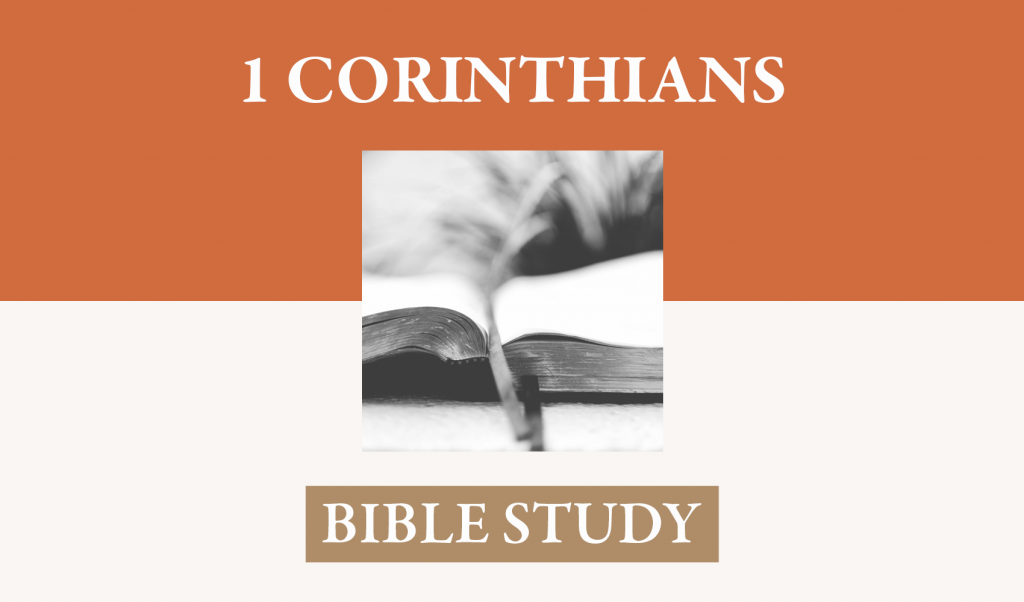I. She who loved much was the first to visit the tomb of the Lord. She provided the first testimony that he, the Lord, was not there. That the Testimony of Mary Magdalene comes first is particularly counter-intuitive. This very face enhances its historical credibility, because an effort to produce a deceit probably would have selected a more prominent first witness, more easily creditable by the public.
A. She observed that the stone was rolled away (20:1). John began with the most elementary of all the evidences, but that demands a credible answer, “Who rolled away the stone?” She thought that perhaps enemies had done it; certainly not. Their greatest fear was that his predictions of resurrection would somehow be believed.
B. She observed that the tomb was empty (20:2); Her going to the disciples included the report that someone had “taken him away.” Obviously she had at least peered into the tomb in an amazed curiosity to see that the body was not there. Her first conclusion was not “resurrection” but that his dead body had been removed by someone.
- This same opinion prevailed even after another visit to the tomb and the observation of other witnesses. John reported this to show that the belief in the resurrection of Christ was not a psychological fixation on an expectation. Even when the glorious angels asked her why she wept, she answered, “Because they have taken away my Lord, and I do not know where they have laid him” (Verse 13).
- Even to the Lord himself she responded to his question as to why she wept, “Sir, if you have carried him away, tell me where you have laid him, and I will take him away” (Verse 15).
C. She mistook Jesus for another person when she first saw and heard him [for the gardener] so he must have appeared as normally human 14, 15.
D. She recognized his voice when he called her name. She did not grasp his identity when he asked her the questions “Why” and “Whom.” But from the fact that he knew her name, and perhaps because she had often heard the inflection of his voice in saying it, she immediately perceived who he was.
E. She touched him and clung to him (verse 17) – Jesus lets her know that she must not think that now he will stay here. As he earlier told the disciples, he must ascend in order to send the Holy Spirit to effect all of those things put into place by the death of Jesus (John 14:25-29; 16:5-15). Their own future ministries would be done under the power of the Spirit in the new covenant arrangement. Note the tenderness with which he calls “Brothers” these that have most recently forsaken him and fled in the hour of danger.
F. His message to them that he is ascending should spark within them a great confidence that all he said is surely coming to pass. The plan established before the foundation of the world now unfolds with greater clarity. Their own part in it will soon be given pertinence. This message was to be given them prior to his appearance to them.
G. She told the disciples that she had seen the Lord, and, indeed, he had talked to her. She communicated a message from Jesus to the disciples.
II. The Observations of John and Peter – verses 3-10
A. They did not go casually, but they ran. John, the younger of the two, was not concerned about waiting for Peter, but on reaching the burial place as rapidly as possible. He out ran Peter.
B. They observed the empty tomb. John arrived first and looked in the tomb. When Peter arrived he went in, always more aggressive and insistent on learning how things are. He often spoke what the rest of the disciples were thinking, or did what the other disciples wanted to do, but hesitated. When he entered the tomb, John found his boldness increased, and so also entered.
C. They observed the orderly nature of the linen clothes in which Jesus had been wrapped, with the face cloth wrapped by itself (Verses 5, 6, 7). Someone obviously had taken time to fold these grave clothes neatly. Either Jesus himself had done it, or the angels attending him had done it.
D. The events convinced John of Jesus’ resurrection, but he did not yet see its consistency with the Old Testament Scripture (Verse 9).
III. 1 Corinthians 15: 20-28: Yes the resurrection is a real historical event that ties together history from beginning to end. What was merely reported in a low key, understated, factual manner is given its theological significance in the apostolic preaching and writing.
A. In Verses 1-11, Paul has argued that the preaching of the resurrection is at the heart of the gospel.
- First Paul gave a precis of the gospel that he had preached and by which they would be saved; but only if their faith was based on the facts.
- He then narrates quickly the content of his preaching by referring to the death of Christ, his being buried, and his resurrection from the dead, emphasizing that all of this is according to the Scriptures.
- He gives evidence for the resurrection mainly from the experiences of eyewitnesses of the resurrected Christ, including himself.
- He then referred to the transforming effects of the gospel on him, the former persecutor. Did this happen on the basis of a fable; was it the product of a delusion, an imagination, a purposefully fabricated lie?
B. In verse 12-19, Paul makes the point that if the resurrection is not true, then apostolic preaching (as summarized in verses 2-4) is vain and the Christian’s faith is in vain. Some people among the Corinthians were saying that the dead do not rise. But the gospel is dependent on Christ’s having risen. If the dead do not rise, then Christ has not risen. If Christ has not risen then the gospel is not true, we are yet in our sins, and suffering for Christ is meaningless. If there is no resurrection, those who died in the faith concerning Christ as preached by the apostles do not have salvation, but have perished.
C. None of these consequences should be of concern to believers at all, for, the fact is, “Christ has been raised from the dead.”
- In his resurrection, he is the “first-fruits” of those who “sleep,” that is, whose bodies lie in the grave awaiting the time of being awaked from their earthly bed.
- In giving the “First-fruits” the Israelite recognized the special mercies involved in their deliverance from Egypt and their possession of the land (Deuteronomy 26:1-11). A faithful and fully cordial celebration of this rite would testify to their status as “his special people,” called to “keep all his commandments,” and to be “set high above all nations, which he has made, in praise, in name, and in honor, and that you may be a holy people to the Lord your God, just as he has spoken” (Deuteronomy 26:16-19).
- It symbolized their confidence in the faithfulness of God in providing richly and abundantly for them so that they gave both numerically, the first or earliest of their produce, and qualitatively, the first in value. This promised a full harvest.
- So Epanetus, as an individual, is called the “firstfruits of Asia to Christ,” (Romans 16:5) and the “household of Stephanas,” as a family also receives that appellation (1 Corinthians 16:15). They were testimonies to God’s lavish outpouring of grace to bring multitudes of Gentiles to be his people.
- Christ’s resurrection sets the stage for a mighty harvest as all of those who have died in the Lord to receive incorruptible bodies to join with their perfected spirits.
- Christ is the new covenant head for his people—
- Adam is the first covenant head and his sin brought about death. Immediate spiritual death happened in the loss of fellowship with God and the corruption of their affections toward God. Eventually physical death came to Adam and Eve as it does to all the Sons of Adam—“In Adam all die.”
- Christ is the second covenant head reversing for his people the collapse that occurred in Adam. Adam’s sin brought all to the grave; Christ’s authority brings all out of the grave, some to everlasting life and others to everlasting condemnation (John 5:28, 29). Christ brings all those that the Father has given him (John 6:65; 17:2) to eternal life in their resurrection (John 6:38-40). “So in Christ will all be made alive.”
- Resurrection has a specific order.
- The one who conquered death by his shouldering of its curse, whose work was received as having vindicated fully the divine law, whose obedience to it both in life and in death gained the merit of eternal life is the first to rise from the dead in an incorruptible state. It is possible, however, that, as immediate assurance of the certainty of Christ’s victory even at the moment of his death, the saints that arose then were not just resuscitated by actually given resurrection bodies (Matthew 27:50-53). Nevertheless, the glory is Christ’s, he is the “firstfruits,” the one by whose resurrection all other resurrections are guaranteed.
- At the coming of Christ those who are dead will arise and rejoin their spirits that will descend with Christ at his coming. Then those who are alive at his coming will be transformed, mortality will be swallowed up by life (2 Corinthians 5:4), and go to meet the Lord in the air (1 Thessalonians 4:13-18).
- The culmination of history has a specific order.
- Christ began his reign as the resurrected Messiah in his ascension and all things are under his feet.
- He has fulfilled as the last Man what the first man could not fulfill (Psalm 8:6; Hebrews 2:9). All things were to be under the feet of man, but his sin made the world subject to vanity and robbed him of that exalted end (Genesis 3:17-19; Romans 8:19-23). This was fulfilled in Christ at his resurrection and ascension: “He raised him from the dead and seated him at his right hand . . . and he put all things under his feet” (Ephesians 1:20, 22).
- He has destroyed him that has the power of death, the devil (Hebrews 2:14, 15). Until the promised punishment was executed, Satan, the tempter, could point to God’s own immutable character as a reason that death, eternal punishment, must come to all men. The substitutionary death of Christ with the resultant impossibility of death maintaining its hold on him disarmed Satan of his chief argument against eternal life for the sinner (Genesis 2:16, 17; Acts 2:23, 24).
- His people who were under the curse were in his resurrection relieved of fear (Romans 8:15 2; Timothy 1:7, 8; Hebrews 2:15-18).
- His redeemed ones have been delivered into his kingdom (Colossians 1:13).
- Finally, death itself will be abolished. The confidence of this reality expressed throughout the New Testament truly is amazing. The most sobering reality, existentially experienced and universally acknowledged, is death. The biblical explanation that death is the result of sin at the very root of the human race, has spread to all men, and is aggravated by the reality that we have added sin to sin by our constant train of transgressions of God’s law outstrips all other attempts to deal with this phenomenon. Given that it comes from a presently constituent moral reality and exists as a just punishment, that it can be remedied is nothing short of breathtakingly amazing. “Oh death where is your victory? Oh death, where is your sting? . . .but thanks be to God who gives us the victory through our Lord Jesus Christ” (1 Corinthians 15:55, 57). “Who will bring a charge against God’s elect? God is the one who justifies; who is the one who condemns? Christ Jesus is he who died, yes, rather who was raised, who is at the right hand of God, who also intercedes for us” (Romans 8:33, 34).
- Eternity will be a manifestation of the intrinsic glory of God as manifest in the eternal covenant.
- That all things are put under his feet indicates that his work of redemption has been accomplished as Messiah, the God-man who saved his people from sin and condemnation and restored them to the position of lords of creation (Genesis 1:28).
- The Messiah hands over the kingdom to God the Father.
- The order of operations in the eternal covenant of redemption is consistent with the internal and eternal personal relations of the Trinity.
- The redeemed will become personal witnesses of this mysterious three-personed existence of the One True God. How this one God in his simplicity and perfection of essence has interaction within himself as three persons will constitute the foundation of praise forever.
- In the Father’s eternal love for his eternally generated Son, he appointed him to receive a kingdom, with the necessary qualification that this kingdom comes to him by way of the redemption of sinners.
- This kingdom is a gift from the Father to the Son and then returns to the Father as a source of eternal praise. The Spirit gives spiritual life to those redeemed by the Son, indwells them, sanctifies them, and is their earnest of heaven while they are on earth. He gives the union with Christ in all aspects of the Son’s saving work so that they are the subjects of their Savior.
- Thus, when all things are subject to Christ, when every knee bows and every tongue confesses that Jesus Christ is Lord (Philippians 2:10, 11) the Son “hands over the kingdom to the Father,” so all of this will redound “to the glory of God the Father” (Philippians 2:11) for “the Son himself also will be subjected to the One who subjected all things to Him.”
- That which was subjected to the Son by decree, then gained by his work of defeating death, is given back to the Father as a testimony to the eternal properties of personhood in their fitting relations in the triune God—“so that God may be all in all” (28). The Psalmist, in viewing by revelation the wonder of this eternal counsel, wrote, “I will declare the decree: The Lord has said to Me, ‘You are my Son, today I have begotten You. Ask of me, and I will give you the nations for your inheritance;’” and then warns the earthly rulers, “Kiss the Son, lest he be angry and you perish in the way” (Psalm 2:7, 8, 10, 12).
- Jude probes this trifold operation in saving sinners by mentioning a particular trait of the involvement of each in the outworking of this eternal purpose: “But you, beloved, building yourself up on your most holy faith, praying in the Holy Spirit, keep yourselves in the love of God, looking for the mercy of our Lord Jesus Christ unto eternal life” (Jude 20, 21).
- Then, with this glimpse of the intercession of the Holy Spirit, the electing love of the Father, and the merciful labors of the Son, Jude combines them in the single saving and preserving work of God as the fountain from which praise flows in true worship here and in the unhindered purity of worship in eternity: “Now to him who is able to keep you from stumbling, and to present you faultless before the presence of his glory with exceeding joy, to God our Savior, who alone is wise, be glory and majesty, dominion and power, both now and forever. Amen” (Jude 24, 25).
- It will then be seen that this one God, this single essence of eternal glory and infinite excellence, exists as three persons, each with distinctive incommunicable personal attributes. Each will glorify the other with perfect love while the operations of each for the glorious plan of redemption will be seen as contributing to the glory of the whole—the triune God.
- The resurrection, therefore, not only is the only hope of sinners, but the very linchpin of the worship and the eternal expressions of God’s glory.


















